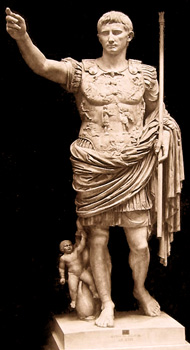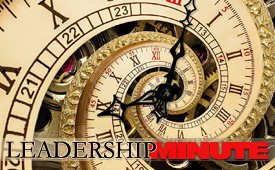 |
 |
08.05.11

The Iconography of LeadershipArt critic Robert Hughes discusses the influence of Rome’s art on Roman history in his book Rome: A Cultural, Visual, and Personal History. He points out that like the propaganda of today, statues in ancient Rome perpetuated the power of leaders. He presents the “competent, effective and memorable” statue of the emperor Augustus found in the Villa of Livia at Prima Porta, as an example that has few equals as an image of “calm, self sufficient power.”Hughes writes, “Until the advent of photography and then of TV, which effectively replaced them, propaganda statues were indispensable when it came to perpetuating the iconography of leadership. They were produced in mass numbers all over the world to celebrate the virtues and achievements of military heroes, political figures, wielders of every sort of power over all kinds of people.”  Hughes states that we should not think of this as a unique piece. “The Romans,” he writes, “reveled in the cloning, copying and dissemination of successful images—successful, that is to say, especially from the viewpoint of ideology.” Certainly, whether to perpetuate a myth or a truth, we do the same today. Images create a powerful story.
Posted by Michael McKinney at 03:51 PM
|
BUILD YOUR KNOWLEDGE
 

How to Do Your Start-Up Right STRAIGHT TALK FOR START-UPS 
Grow Your Leadership Skills NEW AND UPCOMING LEADERSHIP BOOKS 
Leadership Minute BITE-SIZE CONCEPTS YOU CAN CHEW ON 
Classic Leadership Books BOOKS TO READ BEFORE YOU LEAD |